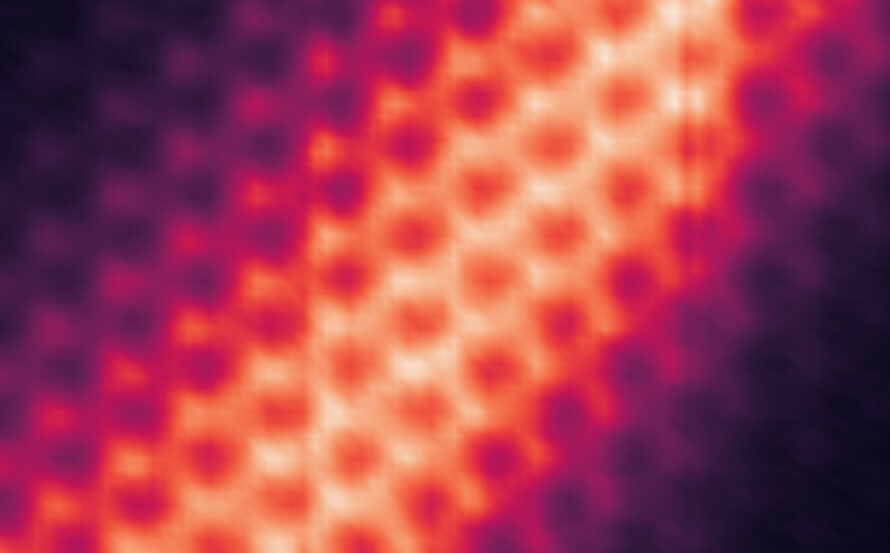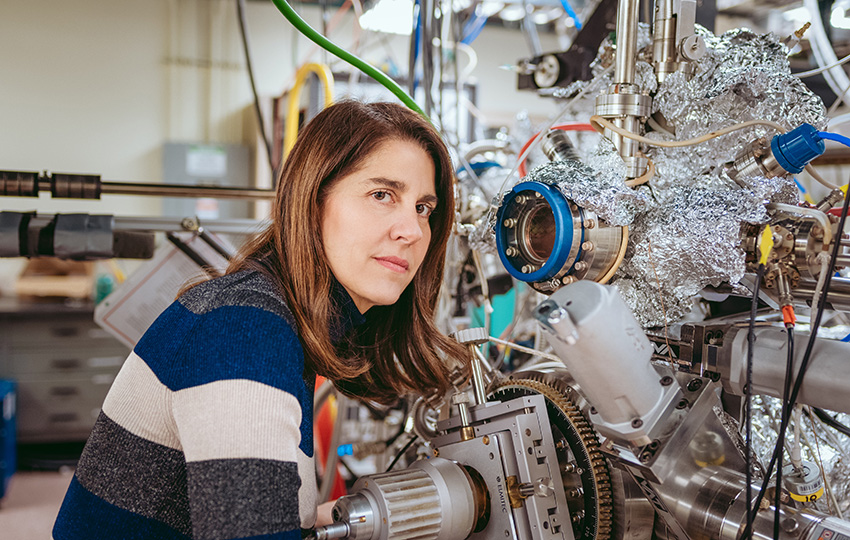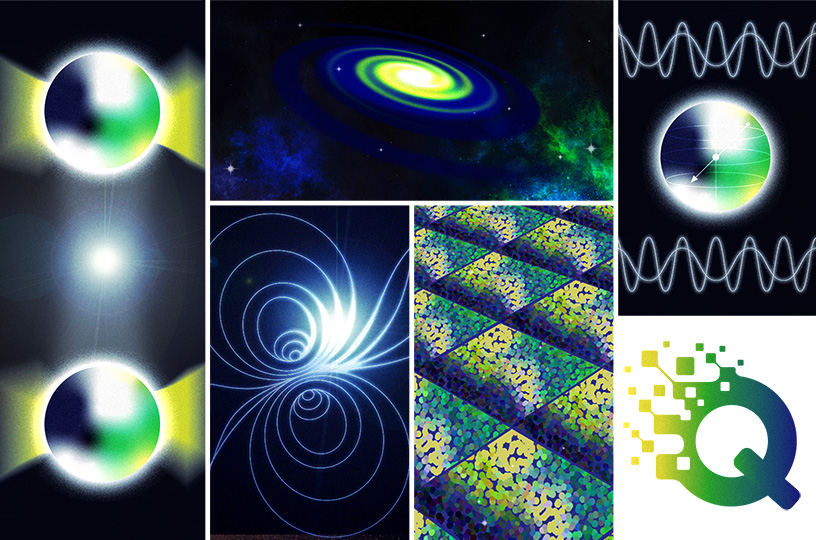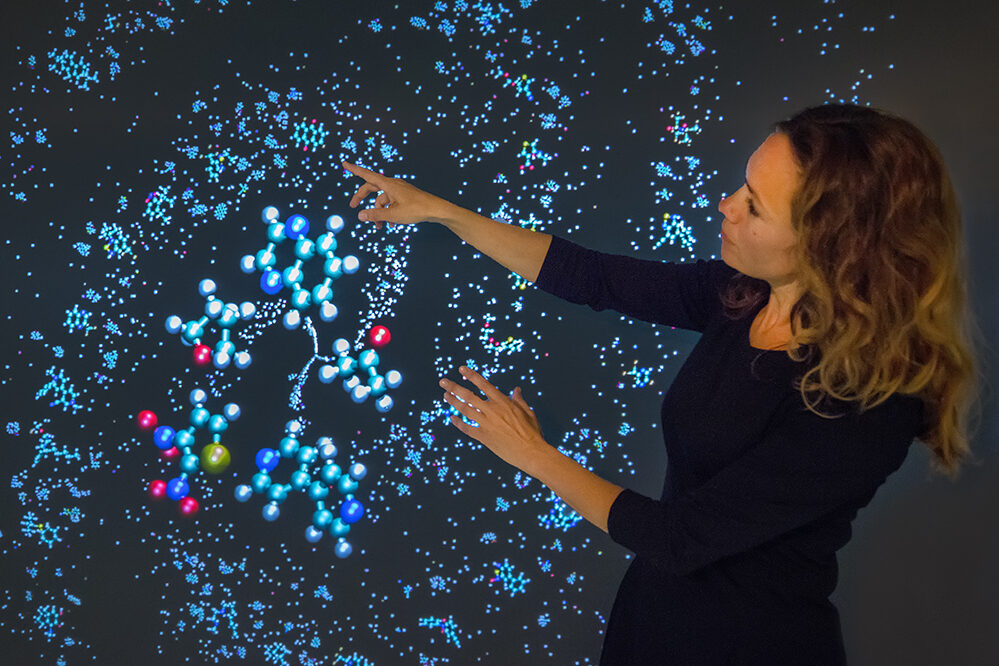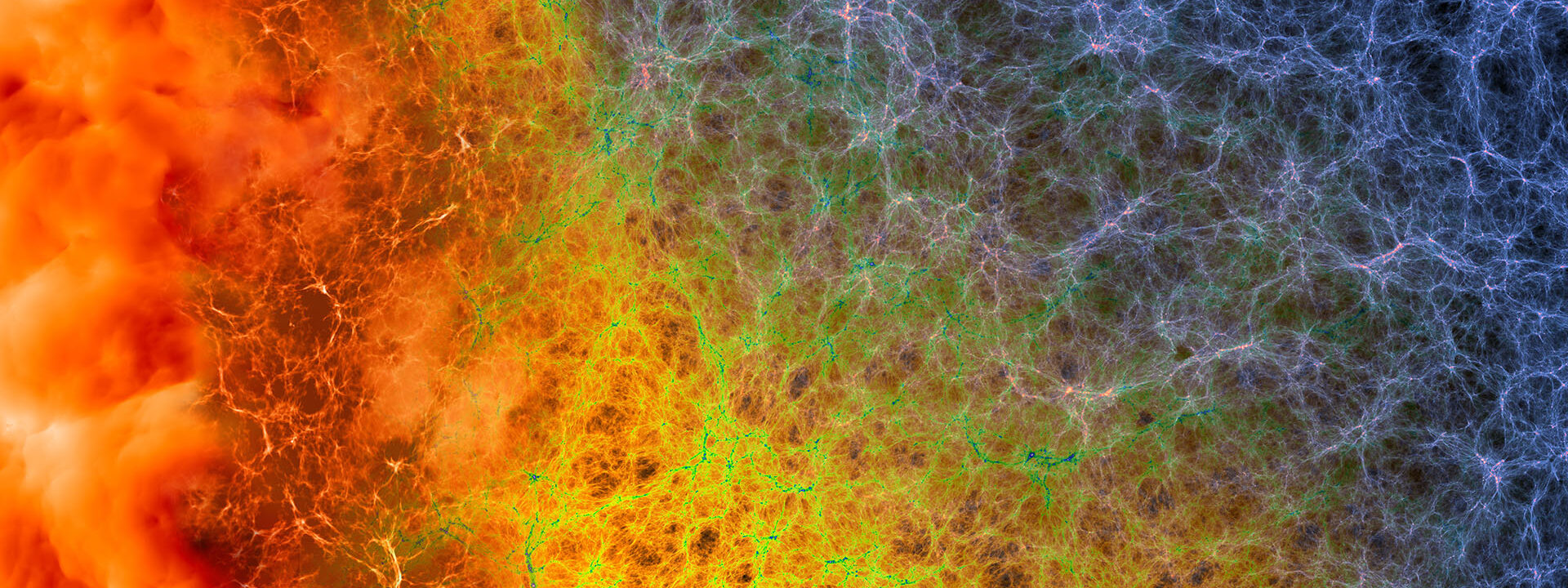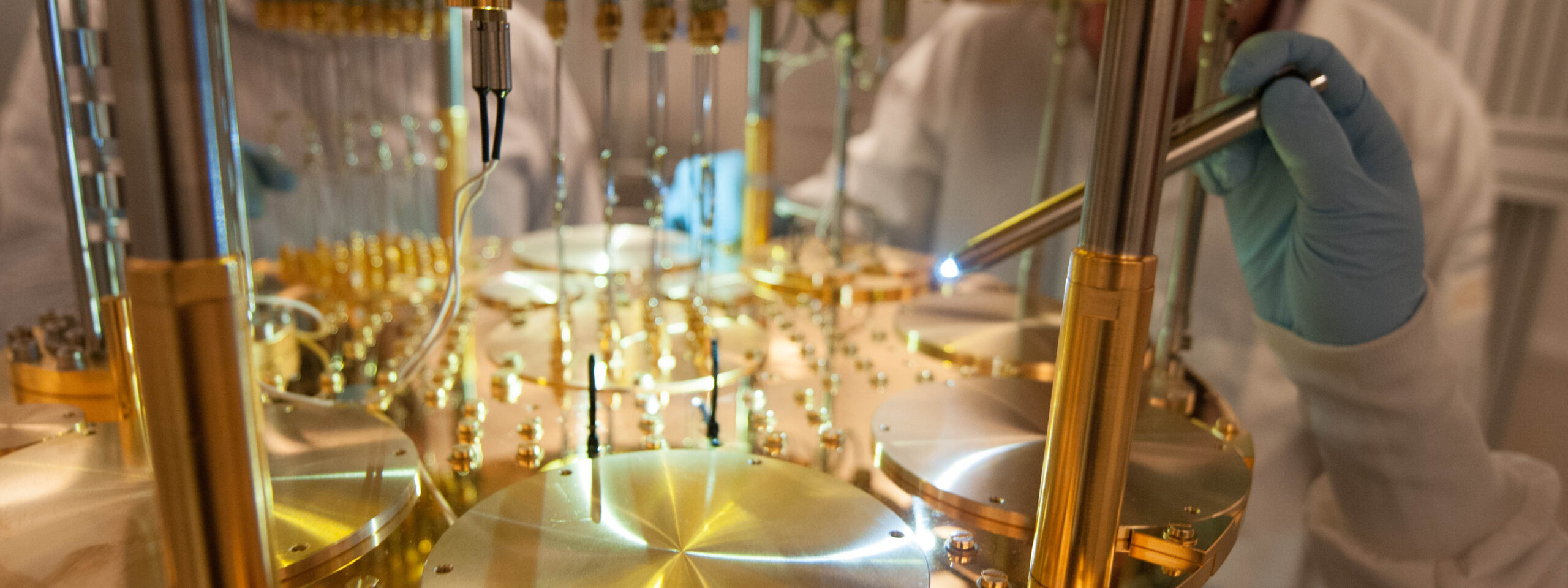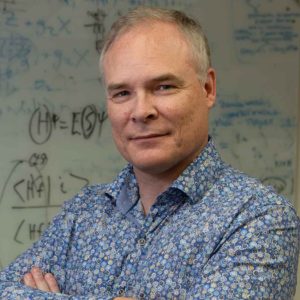
Quantum materials
Predicting, designing, and synthesizing quantum materials and tailoring their properties to address pressing technological needs.
Quantum hardware
Designing and fabricating proof-of-principle and prototype quantum processors, controls, sensors, and more.
Quantum software and protocols
Developing algorithms and programming tools to harness the power of quantum computing.
Quantum communications and networks
Developing a prototype quantum network based on entanglement to connect quantum testbeds.
Advancing science with quantum
Exploring the application of quantum computing for discoveries in physics, chemistry, biology, and more.
Training the quantum workforce
Growing a next-generation workforce to keep the nation at the forefront of quantum science innovation.
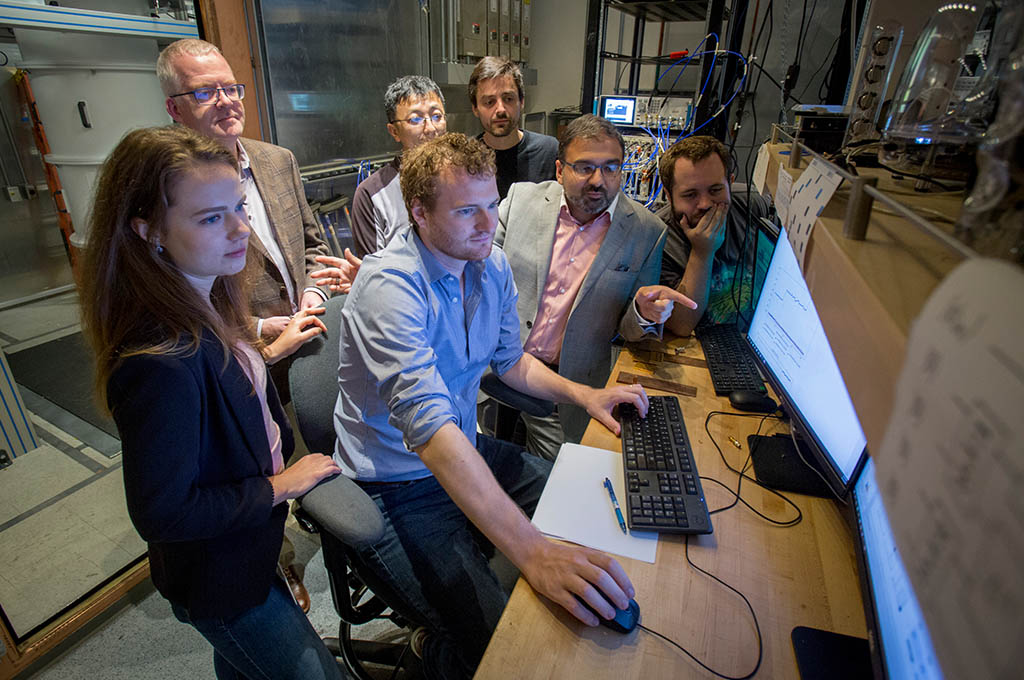
Bringing together an ecosystem of 80 world-class researchers from 15 partner institutions to catalyze national leadership in quantum information science.

A collaborative research laboratory and open-access testbed to advance quantum computing based on superconducting circuits.
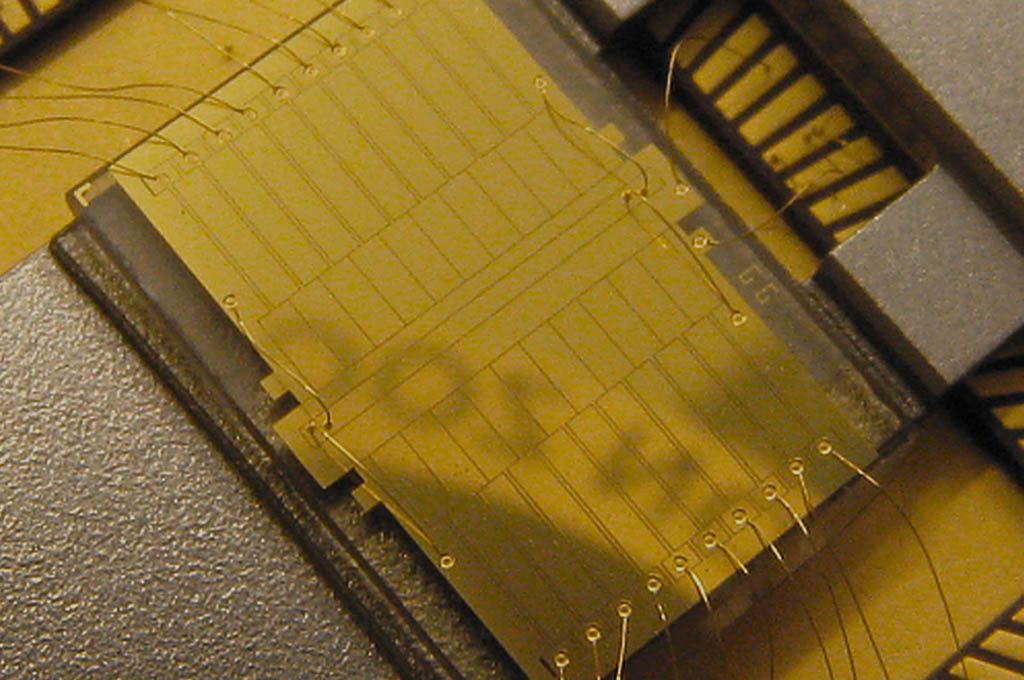
QUANT-NET brings together world-leading expertise in quantum technologies, optics, materials, networks, testbed operations, and other assets from Berkeley Lab, UC Berkeley, and Caltech in order to build a proof-of-concept quantum network based on entanglement.

This Energy Frontier Research Center’s objective is to dramatically expand our control and understanding of coherence in solids by building on fundamental materials discoveries in recent years.

Scientists are creating a “nanofabrication cluster tool set” that allows users to investigate the fundamental limits of state-of-the-art quantum systems. Another effort is developing a unique suite of electron beam-based metrology techniques.
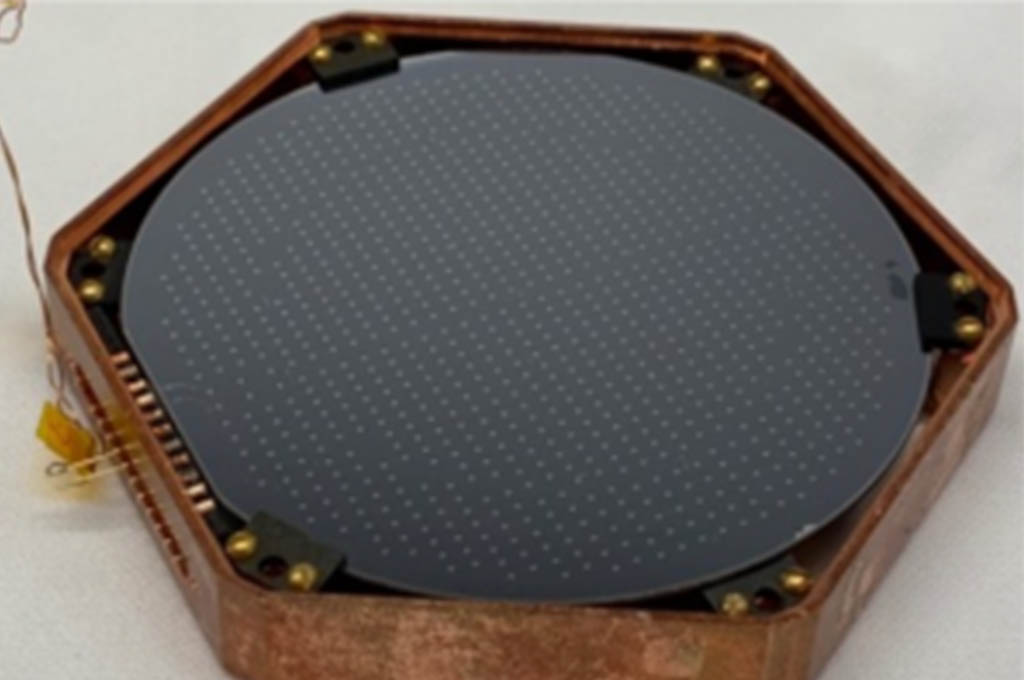
Berkeley Lab is developing sensors that enlist properties of quantum physics to probe for dark matter particles in new ways, with increased sensitivity and in previously unexplored energy regimes.

This program seeks to investigate the properties of strongly correlated materials by shining light onto them.
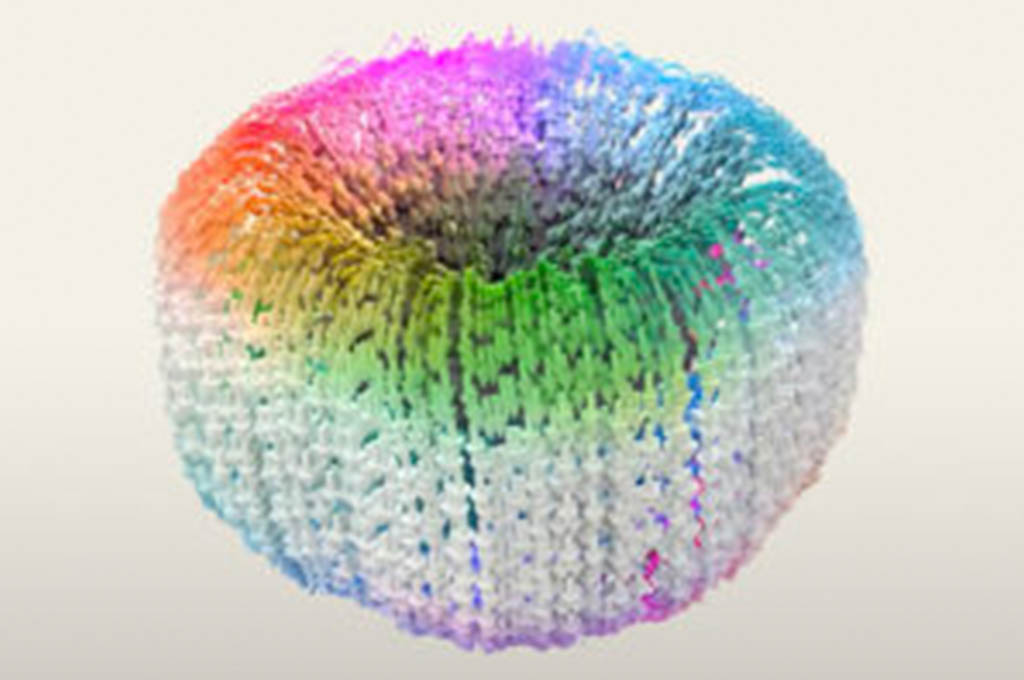
Advancing the development and understanding of new synthetic materials and their electronic, spin, chemical, and physical properties.
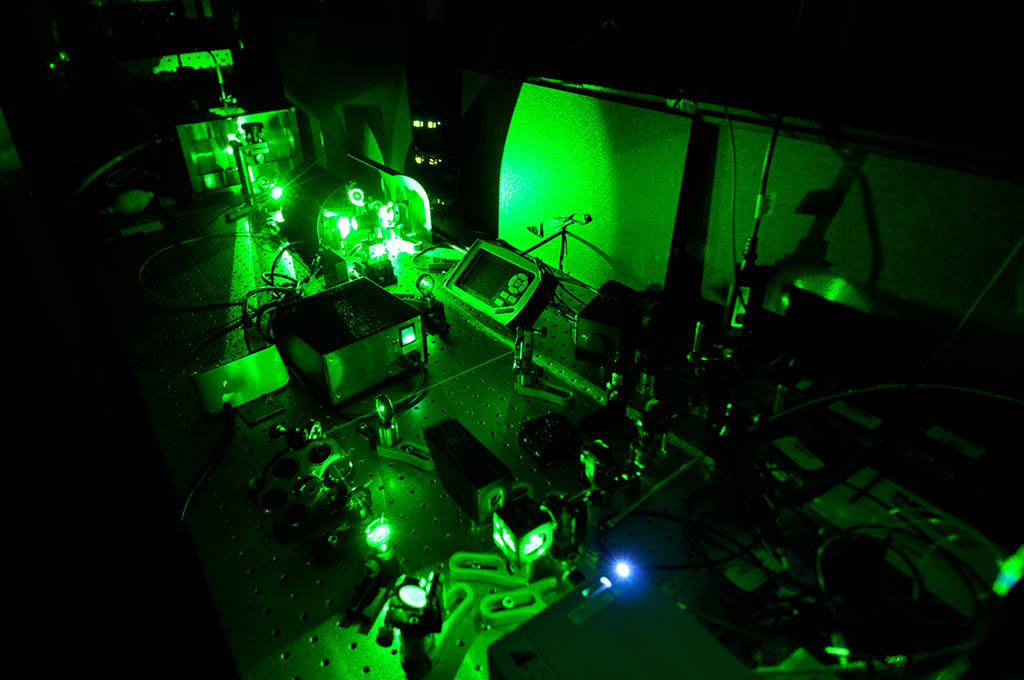
Scientists are building a quantum sensing instrument for sensitive physical metrology, magnetometry, and chemical detection.

Scientists are developing and delivering an open-source computing, programming, and simulation environment that supports the large diversity of quantum computing research at the Department of Energy (DOE).
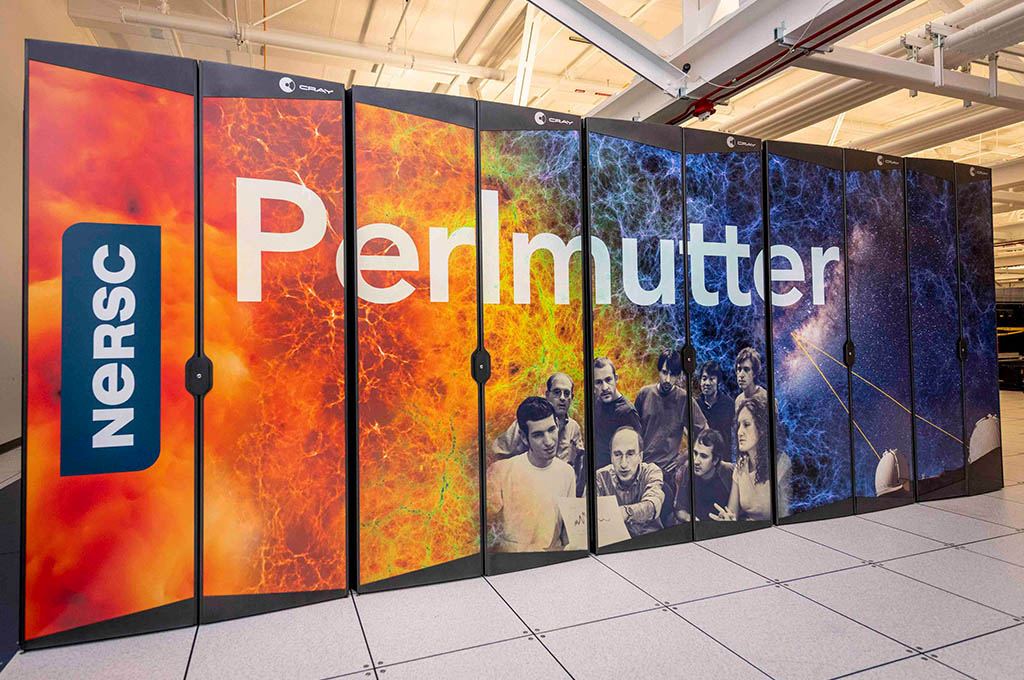
Researchers are modeling QIS devices, circuits, and algorithms on Perlmutter and exploring hybrid computing techniques, which integrate classical computers with quantum tech, to illustrate the potential of QIS for scientific discovery.
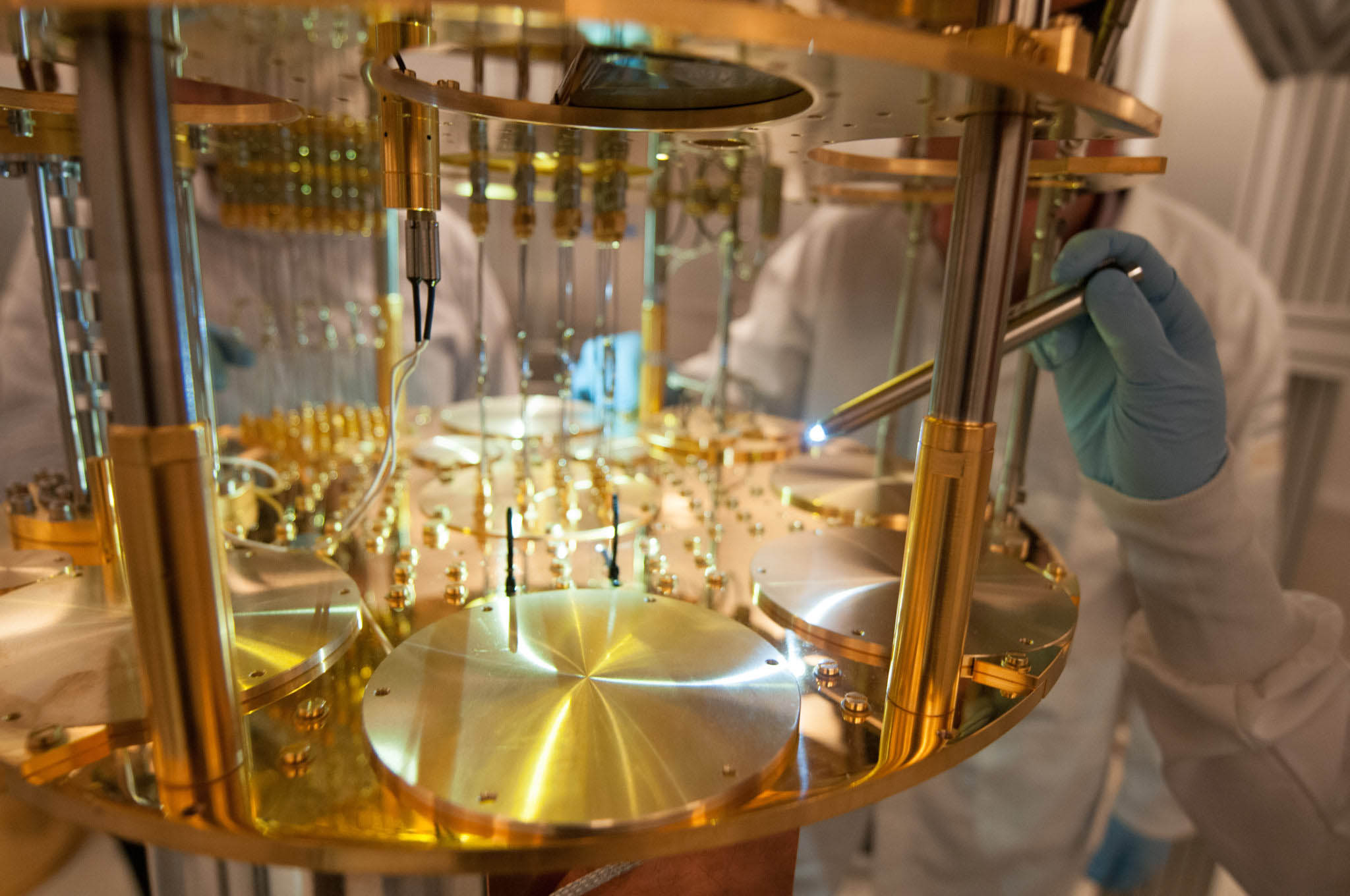
BQSKit is a superoptimizing quantum compiler and research vehicle that combines ideas from several projects at Berkeley Lab into an easily accessible and quickly extensible software suite.
We foster strong partnerships that guide innovations from the Lab toward the marketplace. See our quantum technologies.
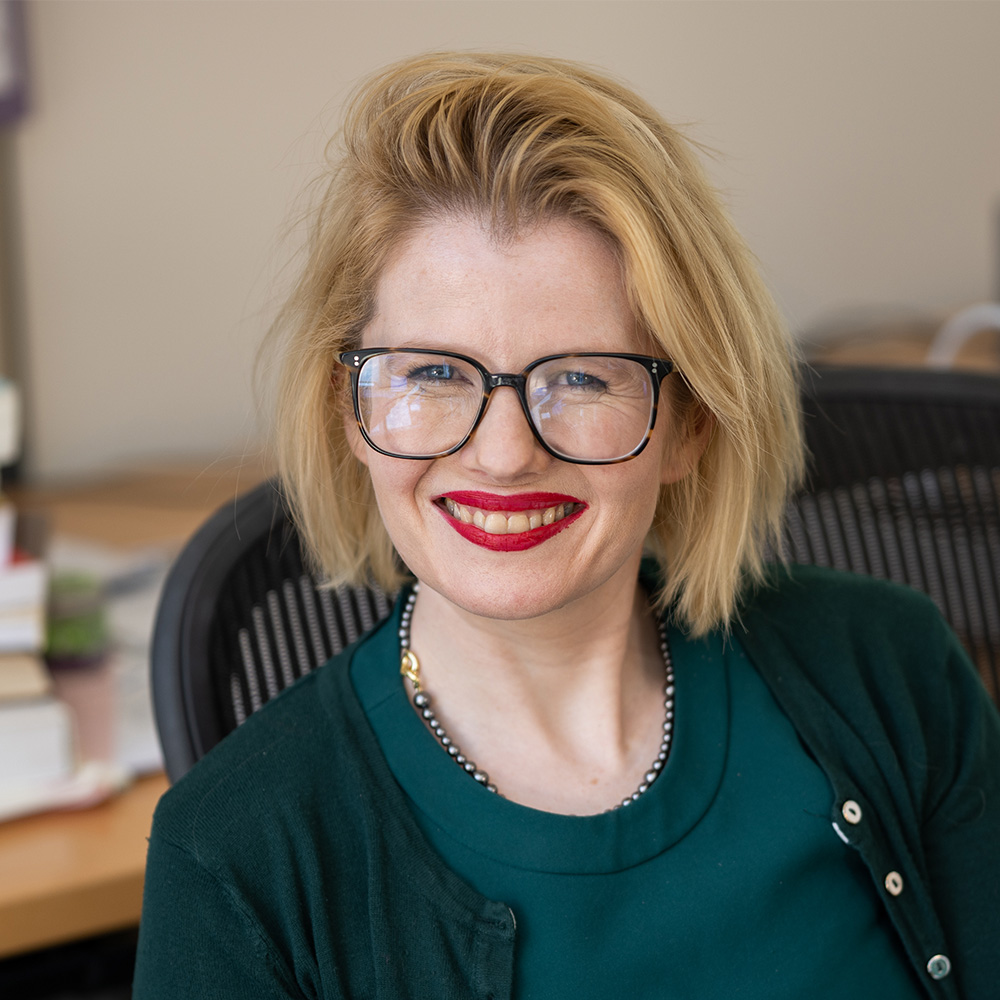
"Using theory and computational tools allows us to design new quantum materials that no one has thought of before! The application of this is vast ranging from finding new superconductors or defects for qubits, to more energy-efficient multiferroics, and even to new ideas for detecting dark matter."

“With this cutting-edge testbed we are asking and evaluating the basic science questions needed to guide the future development of quantum computers.”
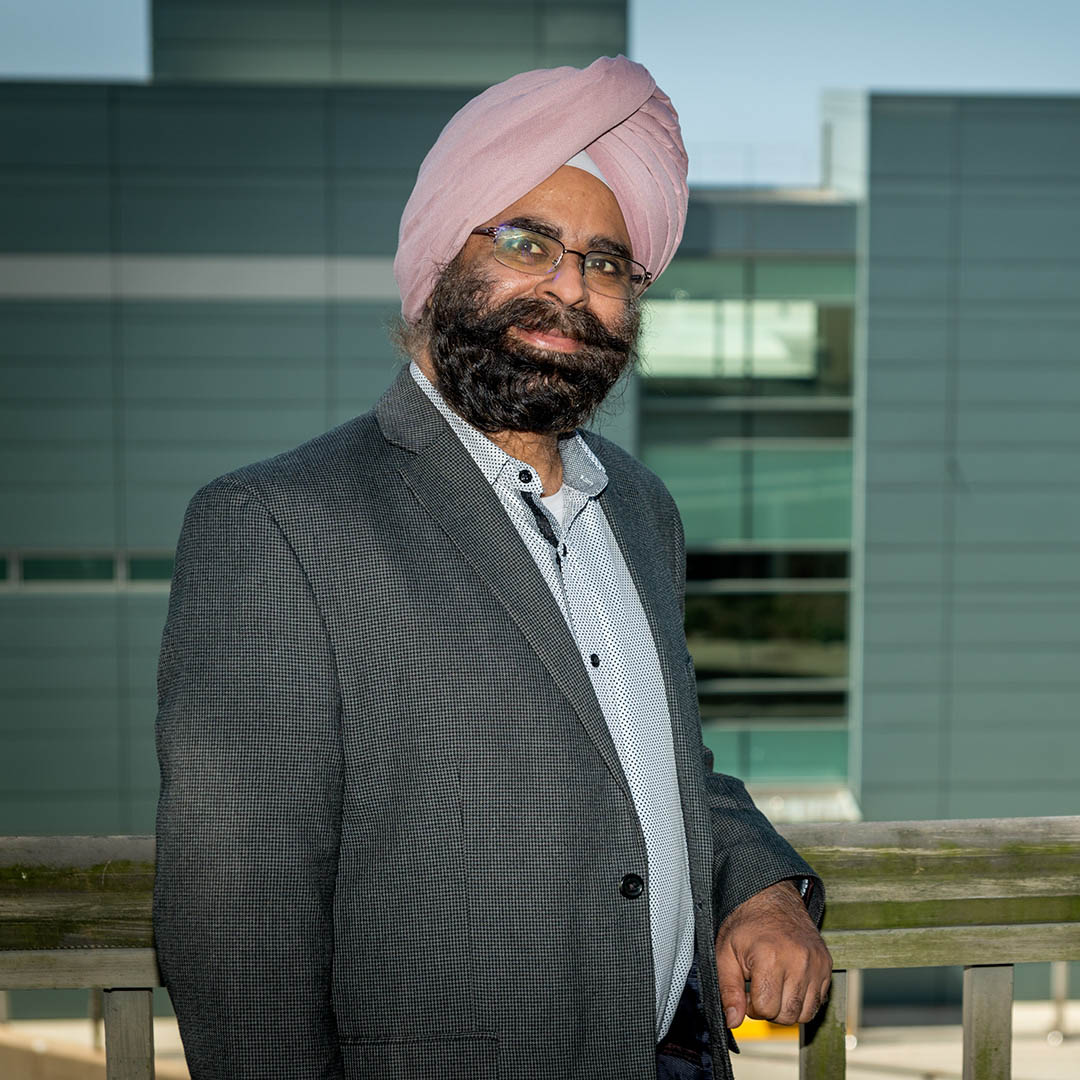
“Berkeley Lab has the network deployment expertise and protocol knowledge to work hand-in-hand with the quantum physicists, scientists, and device and system manufacturers to ensure the right architecture is chosen to realize the DOE’s vision of a quantum Internet.”
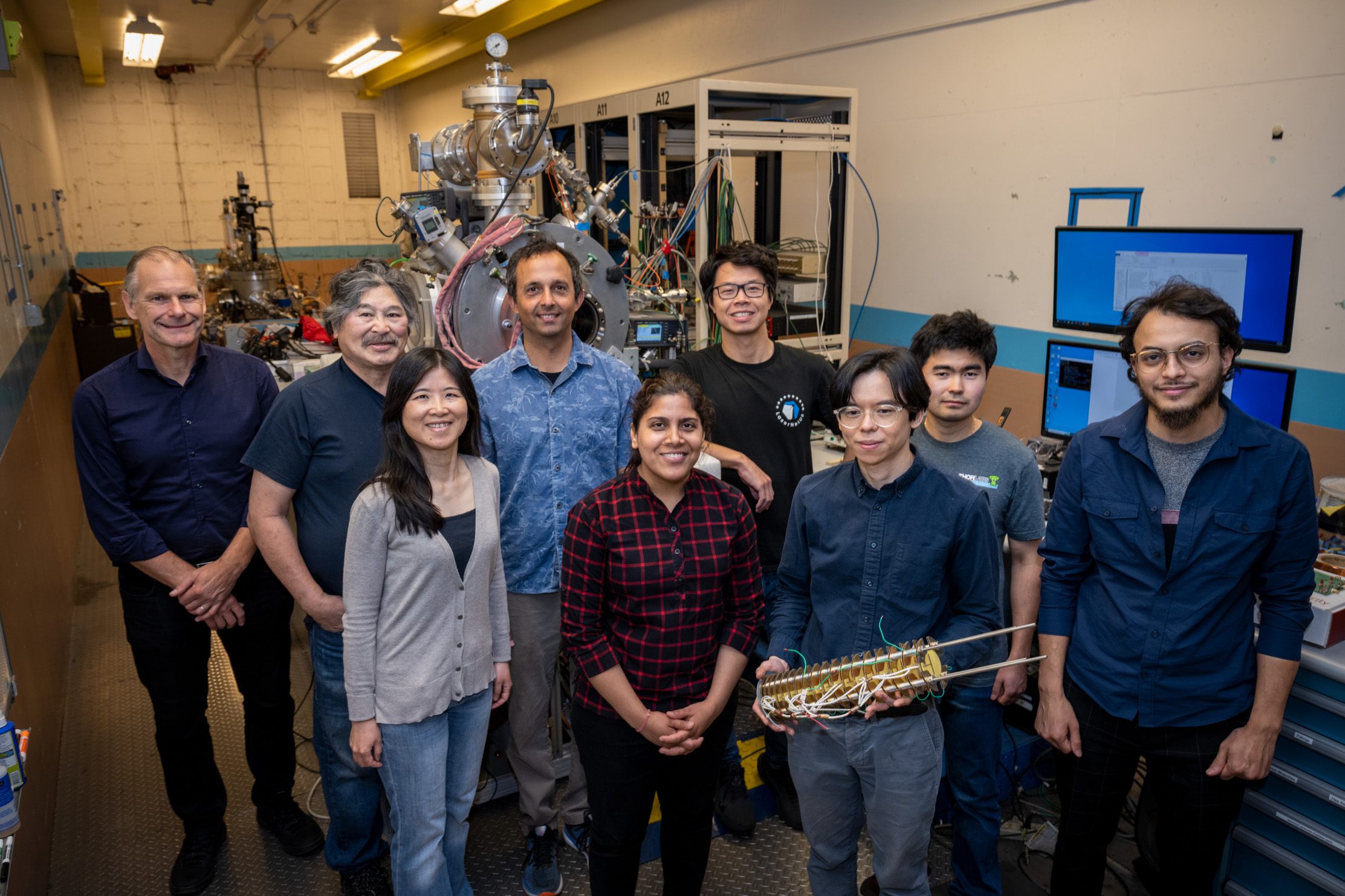
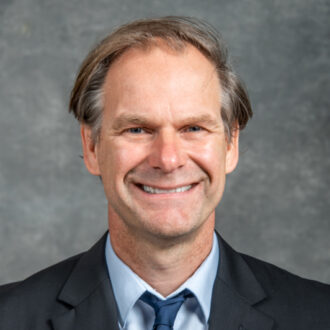
A team of researchers has recently demonstrated a more effective technique for creating quantum emitters using pulsed ion beams, deepening our understanding of how quantum emitters are formed.
Former Berkeley Lab Research Scientist and QSA researcher Mekena Metcalf is a quantum wrangler who develops computer software and theory to control quantum systems with electromagnetic waves. Controlling quantum systems efficiently will allow the implementation of quantum algorithms for next-generation high-performance computing, develop accurate sensors to measure elusive properties of the universe like dark matter, and teleport quantum information from one scientific facility to another.
Schrödinger’s cat is alive and well … as a guiding principle in modern quantum computers! Check out this episode of our podcast, A Day in the Half-Life, to hear what’s going on with quantum computing at Berkeley Lab.
